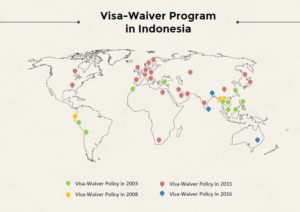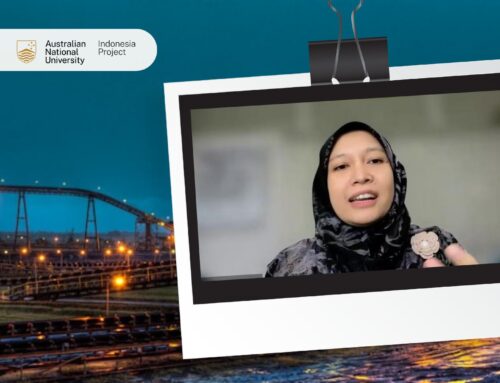On 18 May 2018, LPEM FEB UI hosted the FKP seminar in Jakarta on the issue of visa waiver program (VWP), a program to promote foreign tourist visits by removing visa requirement. Halley Yudhistira (LPEM FEB UI) presented his study on measuring VWP’s significance in increasing foreign tourist arrival in Indonesia. He started his presentation by explaining tourist arrival trend in Indonesia, where there were increasing trends on tourist arrivals in major airports and seaports after the VWP policy has been implemented in 2015. However, some questions still remained unanswered such as whether there were heterogeneous impacts from implementing the VWP on foreign tourist arrival and chances that the VWP might give different impact in short and medium term tourist visits. Therefore, his study tried to examine whether the VWP policy has given any contribution to foreign tourist arrival by controlling seasonal, periodic and regional factors.
Previous studies showed that VWP-like policies tend to reduced the cost of traveling and likely to stimulate potential tourist visits. However, there were not many similar studies for developing countries such as Indonesia. Using econometric approach to estimate average effect of VWP, the study expected a positive relationship between VWP policy and tourist arrivals.
The study found some interesting results. First, VWP was positively associated with a 4% increase on average in foreign tourist arrivals. By taking the measurement on a long-run basis, the study shows that the increase in foreign tourist arrivals has reached 10% after nine months of VWP implementation. This indicates that there is a time-lag for foreign tourists to adjust their travel plan with the newly announced regulation. Second, from the regional perspective, it was found that America and Asia regions are among the most improved in terms of the origin of tourist arrivals, an increase by 9.2% and 7.3% respectively. Thirdly, the impact from VWP differed heterogeneously across destinations, where VWP may increase tourist arrival in Sumatera up to10%. A more limited effect is seen for Java and Bali. However, other regions are worse off.
For the complete presentation and Q&A session, please refer to the videos and materials provided.





